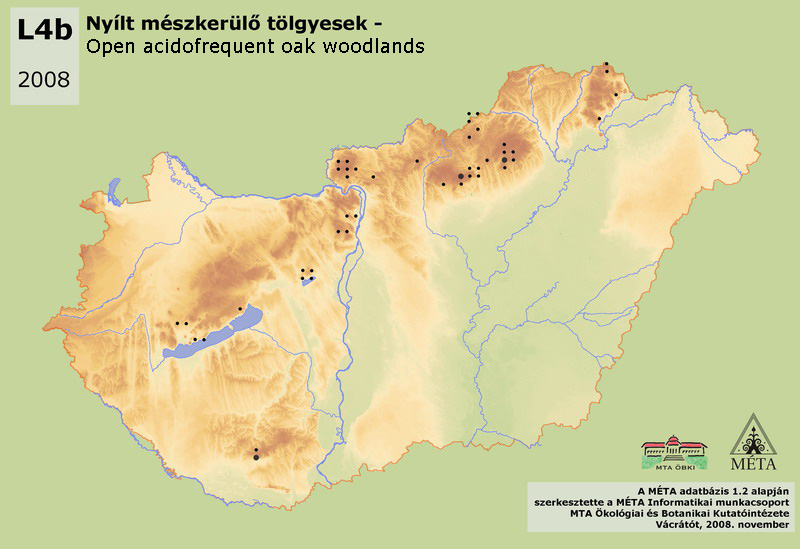MÉTA Program >>> Habitat distribution maps


L4b – Open acidofrequent oak woodlands:
These low-growing forests occur mainly in the submontane oak zone, on extremely acid bedrock and on eroded, shallow, mainly rocky lithosoils. The stands are opened (the maximal closure is 60-70%), which gives a shrub woodland character for the habitat. Quercus petraea is the dominant tree species, the herb layer is composed of species of acidofrequent deciduous forests, and of oak woodlands, those of certain rock grasslands and rock forests, and species of the dry, acidofrequent grasslands. The cover of the cryptogams (mosses, lichens) on the forest floor can be high, and rock outcrops are typical. This rare habitat occurs always in small patches. Its total area is less than 200 ha. It is most frequent in the Északi-középhegység (130 ha, Börzsöny, Mátra, Bükk, Heves-Borsodi-dombság, Sátor-hegység). It occurs with smaller amount in the Dunántúli-középhegység (30 ha, Budai-hegység, Velencei-hegység, Balaton-felvidék, Bakony) and on Dél-Dunántúl (30 ha, Mecsek).
Molnár, Zs., M. Biró, J. Bölöni & F. Horváth (2008): Distribution of the (semi-)natural habitats in Hungary I.: Marshes and grasslands, Acta Botanica Hungarica 50 (Suppl): 59-105. >>> letöltés (5,4 MB, PDF)
MÉTA Program,
MÉTA Fotótár
MÉTA Élőhely-Ismereti Útmutató (ÉIÚ),
MÉTA Adatlap-Kitöltési Útmutató (AL-KÚ)
(C) MÉTA Informatika, 2005-2009,
MTA Ökológiai és Botanikai Kutatóintézete